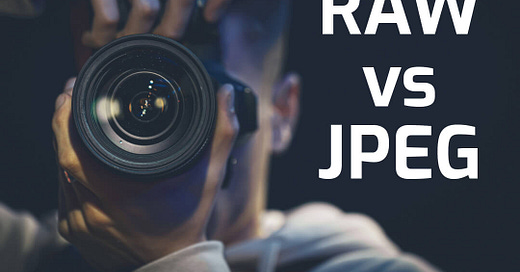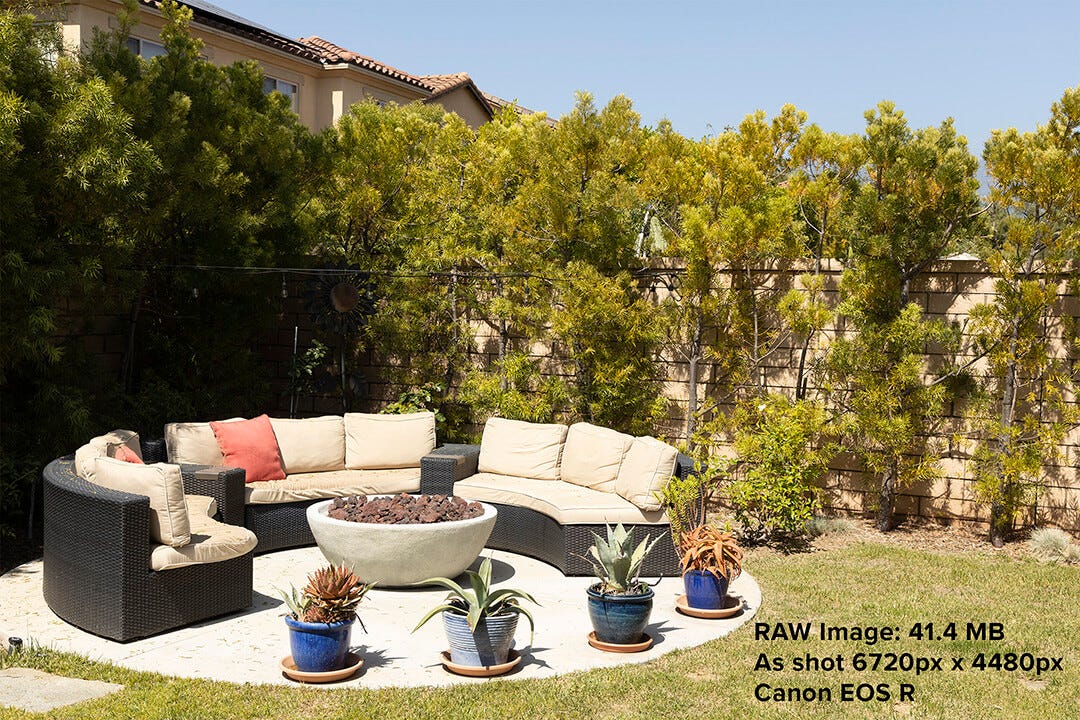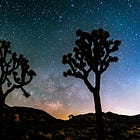RAW vs JPEG
Explore Landscapes #33: A quick rundown on RAW and JPEG to help you decide which format you should be shooting in. Spoiler alert: my suggestion for landscape photographers is to always shoot in RAW.
The debate about which digital file format to use to shoot your photographs, RAW or JPEG, has been ongoing since digital cameras were released onto the market, possibly even before.
Understanding each file format's benefits (and drawbacks) is an important decision for a photographer. It will affect your workflow and, potentially, how/where you can use/sell your images.
What is RAW?
Most digital cameras (DSLRs and Mirrorless) can capture image information in RAW format. In short, RAW is a lossless file (i.e., you don’t have any data) created by your camera that captures the maximum amount of light information from the sensor.
What are the benefits of shooting in RAW?
RAW is the format typically used by landscape photographers. It captures the most light information and lets you tweak and edit the photo most broadly during post-processing. Some of the benefits of RAW include:
Higher Dynamic Range (see my recent post on Essential Photography Terms). RAW files contain a higher dynamic range and color spectrum in a lossless format so that you can adjust the exposure and color much further than a compressed JPEG file.
The best file format for editing. A RAW file provides the best base for editing because it retains the full resolution and quality of the light data captured by the sensor when the photograph was taken. This is critical for shooting large prints and top-quality imagery.
More colors to work with. Shooting in RAW gives you more colors to work with than shooting in JPEG. A JPEG image is 8-bit, while RAW files are typically 12, 14, or 16-bit and contain billions of possible colors recorded as close to their most authentic form.
What's the downside of shooting in RAW?
You’ll need faster/larger memory cards. If you shoot in RAW, your image files will be considerably larger than a JPEG file for the same scene. For example, using my Canon EOS R camera, a RAW file is 41.4 MB (compared to a JPEG file at 15.2 MB)—approximately three times the size. As a result, you’ll need larger memory cards, probably a minimum of 32GB, and faster so that the file is saved without interrupting your shooting.
Larger file storage space is required. Shooting in RAW means you’ll need far more file storage on your computer or external hard drives. If you have more file storage, backing up will utilize even more storage.
Processing/editing workflow. While you can do far more with images derived from RAW files, this will also increase the time you have to spend editing.
I would always encourage landscape photographers to shoot in RAW because the positives far outweigh the drawbacks. You’ll have far more latitude regarding how you can edit/process your images than you don’t with JPEG files. So, if that's the case, what about shooting in JPEG?
What is JPEG?
JPEGs are considered the default file format for almost all (if not all) digital cameras. A Joint Photographic Experts Group (JPEG) file is a lossy (i.e., it loses sensor information) raster file format that compresses an image to make the file smaller. This format is easy to work with when you begin your photography journey and has some benefits in the professional world.
What are the benefits of shooting in JPEG?
JPEG is the most universal format for photographers. Some of the benefits of JPEG include:
Manageable file sizes. Because images are significantly smaller than RAW files, you’ll save (some) money on memory cards, hard drives, and backup storage. For example, using my Canon EOS R camera, a JPEG file is 15.2 MB (compared to a RAW file at 41.4 MB)—approximately a third of the size.
Share files easily. Because of the smaller file sizes, you can share files online or via email more efficiently.
Editing is easier. While you lose the ability to edit files to their broadest extent, you can edit them more quickly, for example, on your phone rather than on a computer.
What's the downside of shooting in JPEG?
There are a few downsides worth mentioning about shooting in JPEG format:
Recovering image details is nearly impossible. If you overexpose or underexpose your image in JPEG, it is difficult (if not impossible) to bring that shadow or highlight detail back. So, if you don’t leave your exposure in the camera when you are, you may be unable to edit the final image as you’d like.
Any alterations make your image smaller. Not only is it harder to edit JPEGs (e.g., recovering shadow or highlight detail), but every time you edit and save a JPEG (for example, for color correction or to add sharpness), you lose image information, and your image file gets smaller. This can lead to lost data and artifacts within your file, resulting in lower-quality images.
So, what's better? JPEG or RAW?
Well, as with many things, that depends. If you’re shooting something and need to turn around finished images quickly, you may want to shoot in JPEG. If you have more time and want the best quality images that you can edit with the maximum latitude, you’ll want to shoot in RAW.
My suggestion for landscape photographers is to always shoot in RAW. However, if you would like the flexibility to have JPEGs quickly and easily, most digital cameras allow you to shoot both RAW and JPEG simultaneously.
You can always create JPEG images from a RAW file in your image editing software (e.g., Lightroom or Photoshop), but you cannot create a RAW file from a JPEG file as the RAW file requires the full sensor information captured by the camera when the shot was taken. When your camera creates a JPEG file only, it deletes the sensor information that it doesn't need to create that JPEG image and then compresses the file to reduce the storage size.
Interesting musings, images, and art from others:
The Bison We DidnDidn't by Jeff Goins
The Gentle Rain of Songbirds by Bryan Pfeiffer
Exploring the Majestic Black Canyon: A Journey into ColoColorado'sden Gem by Brenda Uekert
Sebastião Salgado by Neil Scott
Cosmic Ocean by Alexander Semenyuk
Young Gulch Trail by Rachel Jeffrey
Polaroid Emulsion Lifts by Dan Jandl
Mentors + Self-Education = Success by Jen Hitze
Aurora by Ralph Turner
Photographing an Abandoned Trailer in the Nevada Desert by Benjamin Fargen
Here are a few of my posts that you might be interested in reading:








